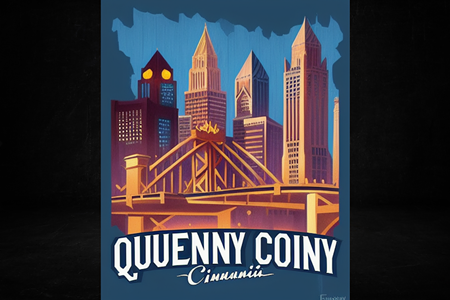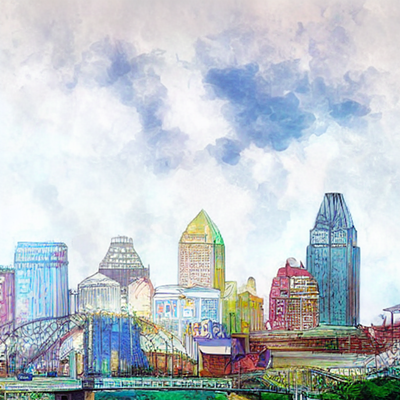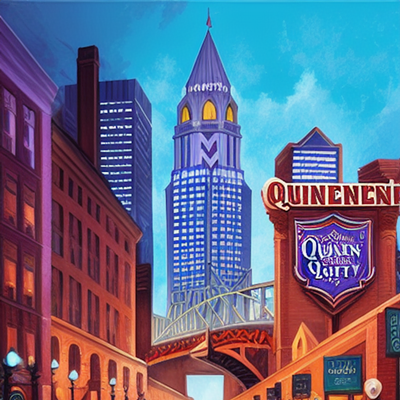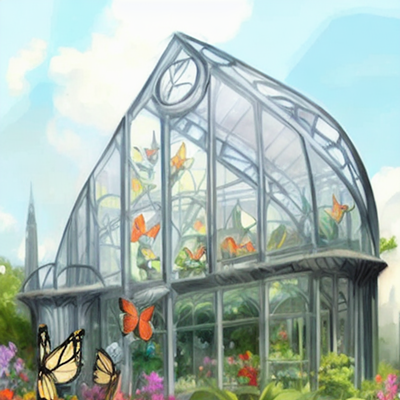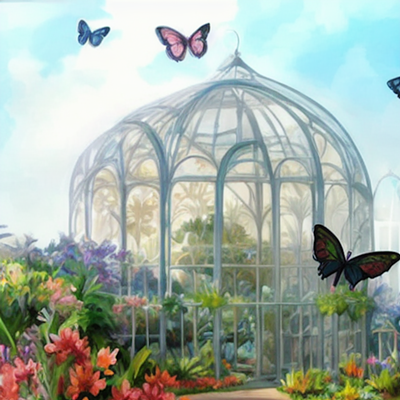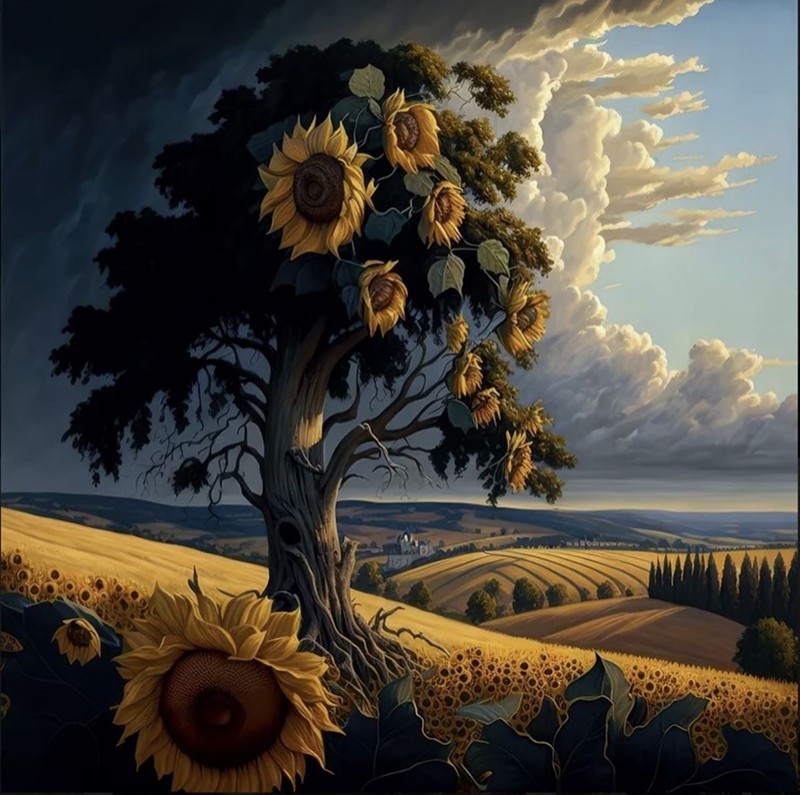
Photo: Provided by Studio Kroner
Cincinnati-based artist Alan Brown's AI-assisted creation "Glorious."
Considering the buzz surrounding AI — including AI self-portraits, the Hollywood screenwriters strike and the resulting threat of AI-written scripts and the rise of AI-written e-books — there’s not much indifference.
Studio Kroner, a local art and design gallery and studio, is presenting a month-long show that investigates the potential and limitations of AI-based work. The exhibition includes various events, symposiums and panels that challenge viewers and artists to answer one question: Yes, But Is It Art?
The exhibitions’ focus and namesake will take form as AI-generated and influenced works, discussion panels and live performances. What are the consequences of producing and promoting AI “art” and what are the benefits?
If it looks like art, feels like art and is presented as such, does it matter who — or what — created it? The answer might be found during the opening reception of Yes, But Is It Art? on May 18 from 6-9 p.m. or during the programming scheduled throughout the exhibition.
“This exhibition, like others Kroner has organized and hosted, is a way of facilitating conversation, a way to tackle difficult subjects through art," according to a press release by Studio Kroner. “So while there is a natural excitement for what AI can do to help artists, this exhibit also considers how AI threatens traditional artists who have spent years perfecting their skills and style.”
In the release, Kroner says that since AI is new to the art world, it introduces a lot of questions, the most obvious being: Is it actually art? And the inquiry that naturally follows: How does AI threaten “real” artists and practices?
Patrick Lichty, professor of Mass Communication at Winona State University and media “reality” artist, curator and theorist, compares AI to a double-edged sword. Lichty is excited by the opportunities AI offers but thinks we should proceed with caution.
“This is a very disruptive technology, but photography didn’t kill painting,” Lichty said in the press release. “The record player didn’t kill sheet music ... This is changing the game radically, but on the other hand, it isn’t going to completely destroy everything.”
Lichty’s contributions to Yes, But Is It Art? are abstract pieces with warm color palettes and fluid shapes atop a familiar but illegible script.
Cincinnati-based photographer and digital artist Alan Brown’s work is featured in the exhibition. Brown’s collection includes surreal flowers and landscapes. “Glorious” is one of his most impressive pieces, and it depicts a giant sunflower tree among rolling hills and a beautiful but ominous sky. If it wasn’t presented among other AI-generated works, one might consider it a master-painting. Upon examination adjacent to the exhibit’s other works the question becomes, how was this created and how much human creativity and input was employed?
Programs like DALL·E, Midjourney and Stable Diffusion are a types of text-to-image AI processes used to generate works in Yes, But Is It Art?.
Basically, the generators provide a blank text box where users can input a prompt. With the click of a button that typically (and ironically) reads “create” or “generate” an image appears.
So, who’s doing the work? The phrase entered may be profound and conceptual like words from a poem, or it can be literal like, “lamps and tree-lined street.” There’s usually a membership, fee or registration process involved, and once the image is produced the artist can present it as is, manipulate it or take inspiration from the image and call it their own.
The process is not completely void of human touch, but the computer does a lot of work.
A collection of dreamlike landscapes by Brandy VanGessel showcases colorful scenes of nature with complementary skies. There is an undefinable AI quality to the works, which enhance landscapes in a dreamlike manner that the human eye wouldn't see in reality. Is it art? Would the AI quality be as striking if the works were aligned with “handmade” pieces? VanGessel thinks the more AI is used, the more approachable and understandable it will become. She is also an advocate for the accessibility and efficiency it offers.
“I’m really looking forward to talking about the opportunities this opens up for people who either physically wouldn’t be able to create art like this, or people who don’t necessarily have the time to develop these really specific skills,” VanGessel said in the release.
Yes, But Is It Art? is inviting intellectual property attorney Sean Owens to join panel discussions and the Cincinnati School for Creative and Performing Arts to Studio Kroner to perform a series of short skits about innovation and disruption.
Does AI-generated work threaten handmade art? Will the “disruption” it created in the art world evolve into a takeover? Does it enhance creativity or replace it? Is there a balance to strike? Are any of these questions relevant if you can’t answer the most pressing one: Is it art?
Yes, But Is It Art? runs through June 17 at Studio Kroner. No matter which side of the argument you’re on, a visit to the exhibit offers an enlightening and educational experience. Whether or not there’s an answer is yet to be determined.
Yes, But Is It Art? programming:
May 18: Opening Reception, 6-9 p.m.
May 20: Artist Talk with Patrick Lichty, Judi Bommarito and Brandy VanGessel, 1-2 p.m. Performance by the School for the Creative and Performing Arts, 7-8 p.m.
May 21: Performance by the School for the Creative and Performing Arts, 1-2 p.m.
May 31: Panel Discussion with Artists Alan Brown and Teri Campbell, 6-7 p.m.
June 17: Closing Reception, 2-5 p.m.
Studio Kroner is located at 130 W. Court St., Downtown. More info: studiokroner.com.
Subscribe to CityBeat newsletters.
Follow us: Google News | NewsBreak | Reddit | Instagram | Facebook | Twitter

